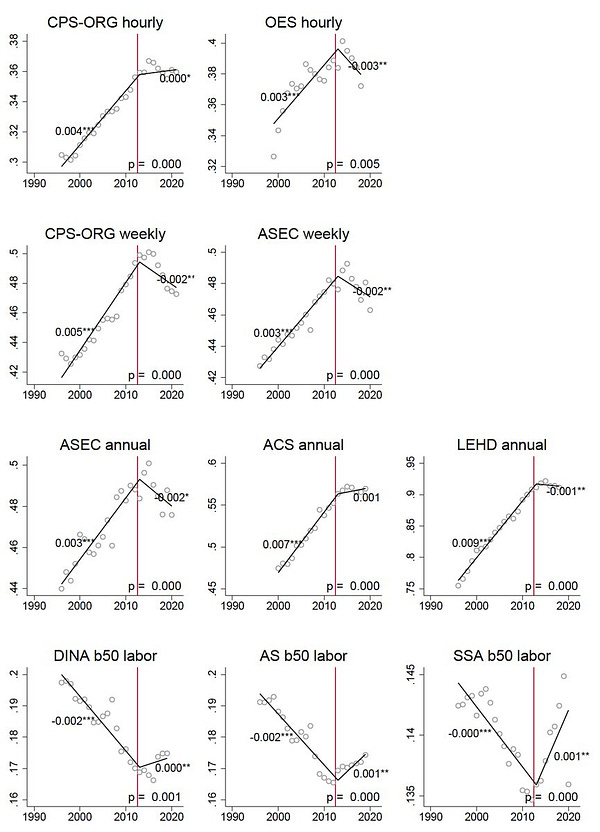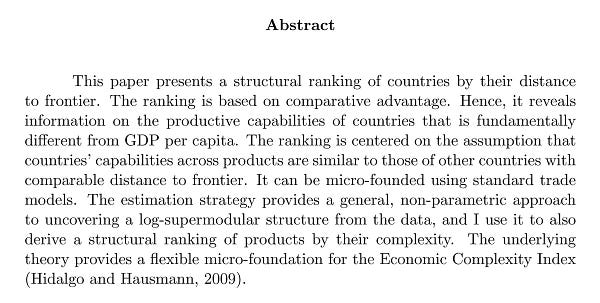Best of #econtwitter - Week of October 9, 2022 [3/3]
Welcome readers old and new to this week’s edition of Best of Econtwitter. Please submit suggestions — very much including your own work! — over email or on Twitter @just_economics.
This is part three of three.
Paper summaries

Since 1980, the defining fact of US labor markets has been rising inequality.
In a new @PNASNews, @AeppliClem and I show that inequality has stopped rising for a decade (c.2012).
But many of the drivers of rising inequality have persisted. What gives?
pnas.org/doi/10.1073/pn…

Quick details: inequality trends are messy, so we pulled together all the data we could: CPS-ORG, ASEC, ACS, OES, LEHD, W-2s, Glassdoor. Hourly, weekly, annual earnings; variance, percentile ratios, income shares.
All tell a similar story: stalling out or declining inequality.


Updates on the Global Income Dynamics (now GRID!) Project:
1. New #NBER Working Paper with @PistaferriLuigi and @glviolante.
We present global trends on income inequality and income dynamics using data from GRID Database: nber.org/papers/w30524
@nberpubs #econtwitter


Very happy to see our paper on Inequality & Earnings Dynamics in France getting published! 🎉
We study (local and national) inequality + income mobility since 1991. We discuss major labor market reforms including: minimum wage, workweek reduction & payroll tax cuts
A 🧵:

Quantitative Economics @qe_editors

My paper "Social security and risk sharing: the role of economic mobility across generations" co-authored with Frank Caliendo (USU) was recently published at ITAX 🧵 1/5
rdcu.be/cVGwi

Excited to share a WP that proposes a structural ranking of countries by their distance to the technological frontier based on comparative advantage. The ranking provides information that is fundamentally different from GDP/cap.🧵 1/n
@HarvardGrwthLab
growthlab.cid.harvard.edu/publications/m…


~12 years after I first started the project, I'm relieved to have the two halves of my job market paper on "reproductive capital" both accepted at journals!! A dating experiment showing men rate older women lower (pic) at JOLE and a matching model and simulation at the JPE 🧵


More: fertility-income; ECB objective; test vs. non-test VA; ESRD Treatment Choice model; ILO definitions; stochastic choice
Interesting discussions

I worry that a lot of people misapply what they learned (or mislearned) about economic efficiency and deadweight loss. It is a very useful concept--but also limited and can be misapplied, especially related to distributional issues.
Here's how I taught it in Ec10 today. A 🧵.
^“obvious”, or, is it

Would be good to have some data facts on this.
In the presence of externalities, equilibria may not be efficient without coordinated interventions, requirements or incentives. We have nothing in place for this. Should we?

Andrew Gelman et al. @StatModeling

If you were going to give one piece of advice to an early career researcher on how to do research that influences policy, what would it be?




